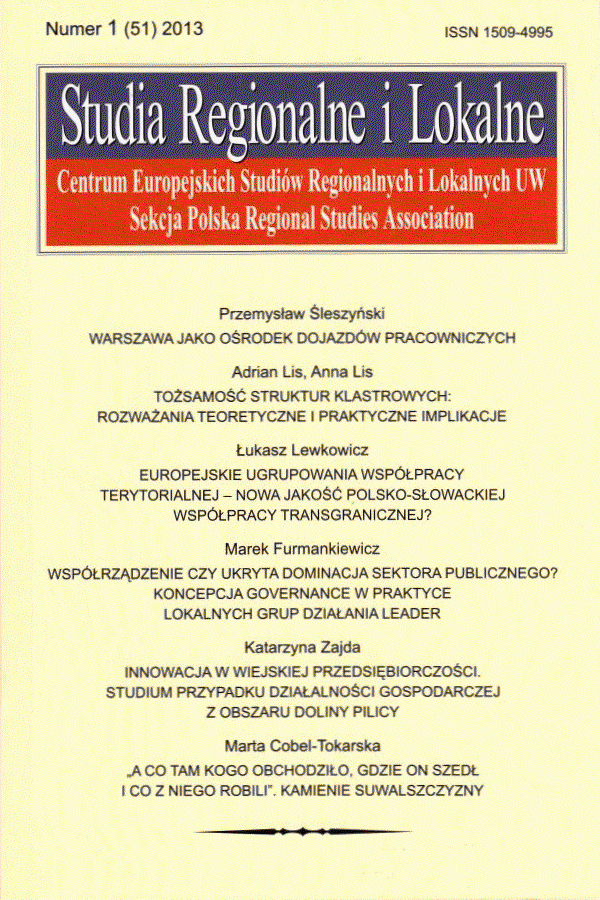Issue:
1(51)/2013
Marek Furmankiewicz
Co-governance or hidden domination of the public sector? The concept of governance in the practice of `Leader` Local Action Groups
DOI: 10.7366/1509499515101
Współrządzenie czy ukryta dominacja sektora publicznego? Koncepcja governance w praktyce lokalnych grup działania LEADER
Artykuł analizuje skład rad decyzyjnych lokalnych grup działania funkcjonujących w ramach tzw. Osi 4 LEADER Programu Rozwoju Obszarów Wiejskich w trzech województwach Polski opisywanych w literaturze jako różniące się znacznie pod względem uwarunkowań historyczno-kulturowych. Zgodnie z ideą współrządzenia wdrażaną w programach typu LEADER wpływy przedstawicieli poszczególnych sektorów gospodarki na decyzje lokalne powinny się równoważyć. Według zasad programu wspierającego, członkowie rady reprezentujący sektor publiczny nie powinni stanowić więcej niż 50% jej składu. Parytet ten ma gwarantować wpływ sektorów niepublicznych na podejmowane decyzje i jest zachowany w dokumentach formalnych LGD. W trzech badanych województwach rzeczywisty udział wójtów, urzędników i kadry kierowniczej sektora publicznego był od 15 do 21% wyższy niż wynika to z danych oficjalnych. W około jednej trzeciej badanych organizacji przekraczał 50% i zapewniał sektorowi publicznemu dominującą rolę przy podejmowaniu decyzji o wyborze dofinansowanych projektów. Proceder ten był bardzo podobny w badanych regionach i jest dyskutowany w kontekście koncepcji governance jako przykład tokenizmu.
Co-governance or hidden domination of the public sector? The concept of governance in the practice of `Leader` Local Action Groups
The article analyzes decision-making councils of Local Action Groups operating in Axis 4 LEADER Rural Development Programme in three Polish regions which were described in the literature as differing significantly in terms of their historical and cultural backgrounds. According to the concept of governance, implemented in programmes such as LEADER, the influence of representatives of various sectors of the economy on local decisions should be balanced and, in accordance with the rules of the support programme, no more than 50% of council members should represent the public sector. This provision, included in formal documents of Local Action Groups, is designed to ensure that non-public sectors do have some impact on council decisions. However, in the three studied regions, the real participation of mayors, officials and executives of the public sector was from 15 to 21% higher than in the official data, and in about one-third of the surveyed organizations it exceeded 50%, which gave the public sector representatives the dominant role in decision-making and selection of eligible projects. This practice was very similar in the studied regions, and is discussed in the context of the concept of governance, as an example of tokenism.
Affiliation:
Marek Furmankiewicz: Katedra Gospodarki Przestrzennej, Uniwersytet Przyrodniczy we Wrocławiu, Grunwaldzka 53, 50-357 Wrocław;
marek.furmankiewicz@up.wroc.pl 


